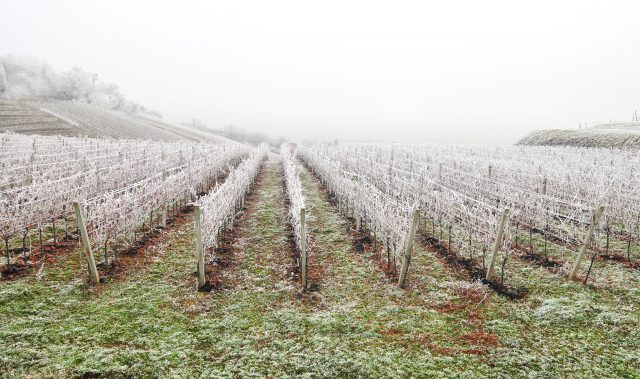Champagne “lucky” with frost compared to other French wine regions
By Patrick SchmittWith an estimated 20% loss to this year’s crop in Champagne due to severe frosts earlier this month, one winemaker told db the region had been “lucky” compared to other parts of France.

Speaking after the virtual launch of Cristal 2013 this week, Louis Roederer cellar master, Jean-Baptiste Lécaillon said that the impact of the frosts had been uneven across the Champagne appellation, which covers more than 30,000 hectares, but overall that the region had been “more lucky” than other areas of France.
“For sure the frosts have caused damage [to the vines in Champagne], but it’s too early to say exactly how much, as most of the vines were still dormant, and we don’t know how deeply the frost affected the vine,” he said.
Explaining that it was possible to see the damage on the green shoots from freezing temperatures, which db has been told reached as low as -6 degrees Celsius on 7 April in some parts of Champagne, he added that it was very complicated to assess the impact on the dormant buds.
“We need another week or two when the buds get out of dormancy to see if they are ok or not,” he said.
For Roederer’s own vineyards, which extend over 240 hectares, Lécaillon said that visual inspections had suggested that the Champagne house had lost 15% of this year’s potential crop, but, he added, that could rise to 25-30% if the dormant buds have also been affected.
“I would bet today on 15-20% loss,” he said.
Interestingly, he said that the best vineyards of Champagne, the grands crus of the Montagne de Reims and the Côte des Blancs were “lightly touched” by the frost.
The worst-affected area of Champagne was the most southerly part of the appellation, the Aube, where the vine cycle is more advanced due to the warmer climate.
“The frost was massive in the Aube, so it was really serious there, with a 50% loss,” he said.
Indeed, commenting on the damage in this part of the appellation, Champagne Drappier – a house located in the commune of Urville in the Aube – confirmed that it had been severe, and as damaging as frost-damaged harvests 1991, 2003 and 2016.
The producer told db this morning that it had lost as much as 80% of its Chardonnay buds, 50% of its Pinot Noir, and 30% of its Meunier – so far from “lucky”, even compared to other parts of France.
Partner Content
Looking in more detail as some of the top crus of Champagne, Lécaillon said that Cumières had been badly affected by the freezing temperatures, and Vertu in the Côte des Blancs may have suffered a 40% drop in projected yields due to the frost.
He also said that it had been especially cold in Aÿ, where it’s believed that the losses could run to around 20%, depending on the vineyard’s location on the slopes of this Pinot-dominated part of Champagne.
Summing up, he said on a positive note, “It is an early frost for Champagne, the buds were only just breaking; we call it a classic early frost, so the second buds will start whatever happens, so it won’t’ be too bad for Champagne.”
“When I see the impact [of the frost] in the Rhône Valley, or the Languedoc, then I think Champagne has been lucky,” he said.
Finally, comparing the situation to previous frost-affected harvests, he said that the impact in Champagne this year was less than it had been in 2003 or 2017.
“It is definitely not as bad as it was in 2003 or 2017, and for us, it is about the same as 2016,” he said.
Furthermore, for Champagne, the region has a buffer system in place to protect against poor harvests as producers are encouraged by laws on annual yields to hold wine in tank for releasing at a later date, known as a “reserve”.
This can be used to bolster the production of Champagne, around 80% of which is made from a blend of wine from different harvests, labelled as ‘non-vintage’.
Below are some estimates of the impact of the frosts on French wine regions on 7-8 April
Total for France:
- 28-32% decline in yields compared to average
- This would amount to around 32m hl (such an estimate would put 2021’s vintage below the frost-affected 2017 harvest, which totalled 36m hl).
Total impact in value:
- Est €2 billion loss
The regions worst affected (% crop losses)
- Burgundy: 50%
- Languedoc: 40%
- Bordeaux: 30%
- Champagne: 20%
Read more




